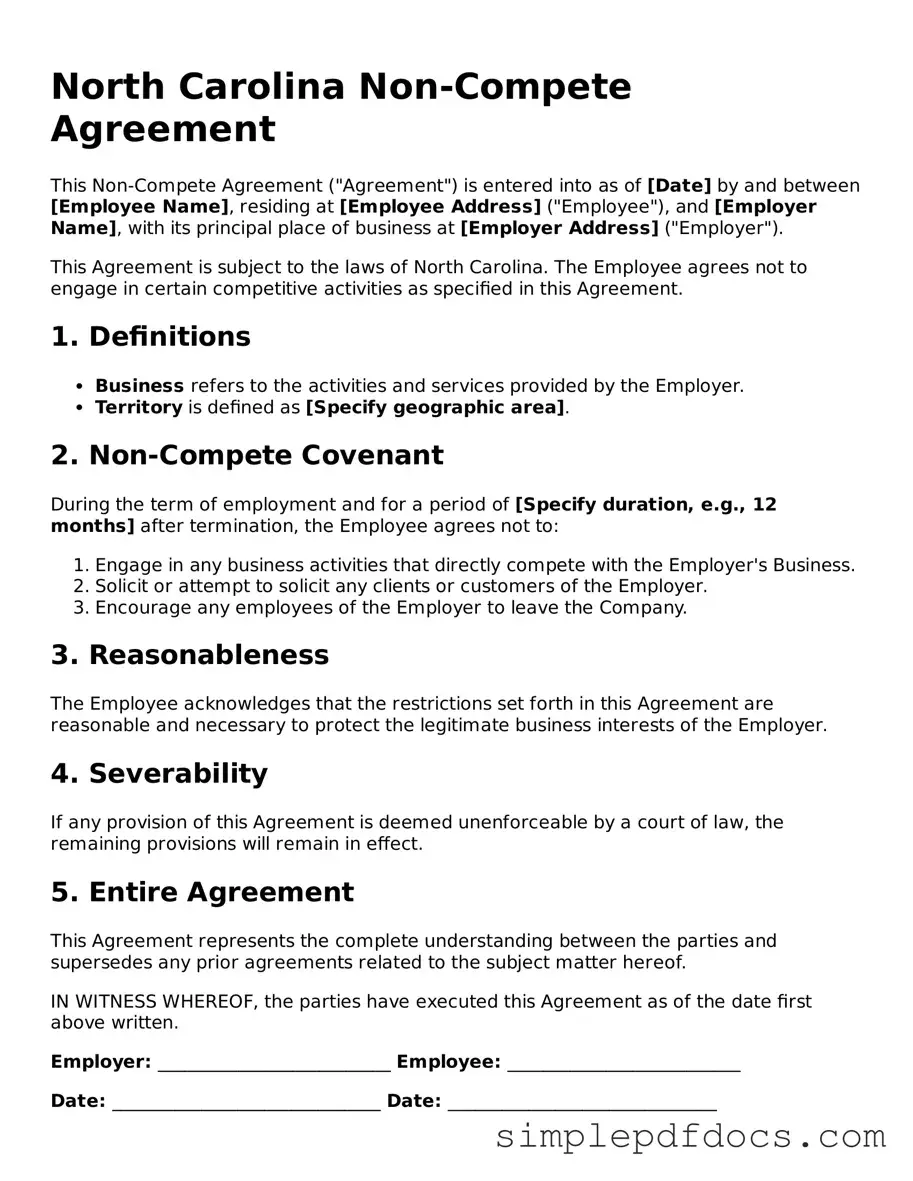Legal Non-compete Agreement Document for the State of North Carolina
A North Carolina Non-compete Agreement is a legal document that restricts an employee from working for competitors or starting a similar business for a specified period after leaving their job. This form aims to protect an employer's business interests by preventing the sharing of confidential information and trade secrets. Understanding the terms and implications of this agreement is essential for both employers and employees in North Carolina.
Get Document Here
